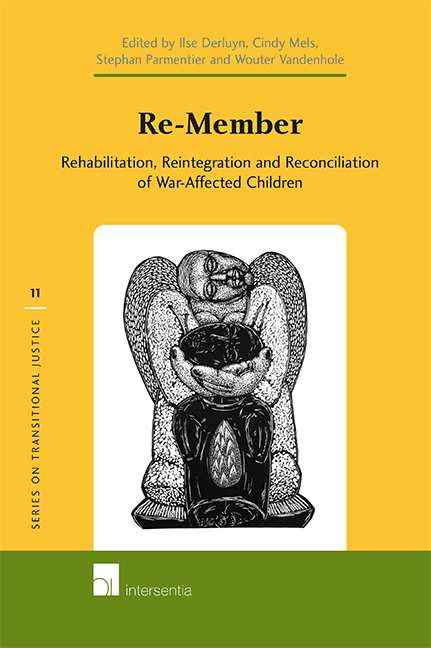Book contents
- Frontmatter
- Preface
- Foreword
- Contents
- Introduction: Children Affected by Armed Conflict at the Intersection of Three Fields of Study
- PART I SETTING THE SCENE: THREE DISCIPLINARY PERSPECTIVES
- PART II LESSONS LEARNT FROM CURRENT PRACTICES AND APPROACHES
- PART III EXPLORING RESOURCES THROUGH EMPIRICAL RESEARCH
- PART IV LOOKING BACK, REACHING FORWARD
- About the Editors
- About the Authors
10 - Support to the Education and Livelihoods of War-Affected Children and Youth in Northern Uganda
Published online by Cambridge University Press: 20 January 2021
- Frontmatter
- Preface
- Foreword
- Contents
- Introduction: Children Affected by Armed Conflict at the Intersection of Three Fields of Study
- PART I SETTING THE SCENE: THREE DISCIPLINARY PERSPECTIVES
- PART II LESSONS LEARNT FROM CURRENT PRACTICES AND APPROACHES
- PART III EXPLORING RESOURCES THROUGH EMPIRICAL RESEARCH
- PART IV LOOKING BACK, REACHING FORWARD
- About the Editors
- About the Authors
Summary
THE WAR IN NORTHERN UGANDA
At the beginning of the last century, 80 to 90 percent of war casualties worldwide were military personnel and 10 to 20 percent were civilian and unarmed. By the end of the century, these figures were reversed. Today, in northern Uganda and elsewhere, armed conflicts and civil wars have blurred the distinction between “combatants” and “civilians”, and “civilian” itself is a diffuse and broad category of non-combatants who are living in the midst of conflict. Frontlines are not easily defined and non-combatants are often targets of harassment and deadly violence.
In northern Uganda, more than two million people were displaced from their homes as a result of the conflict between the northern Ugandan Lord's Resistance Army (LRA), led by rebel leader Joseph Kony, and the Government of Uganda, headed by General Yoweri Museveni. From 1986 to 2006, the rhythm of the war in northern Uganda has been an uneven one, with sometimes long periods of lull in the fighting and rather peaceful times during which people could lead an almost “normal” life, working in their gardens and travelling rather safely on the roads. In 2005, however, nearly 90% of the population in Gulu, Kitgum and Pader Districts, those most affected by violence, had relocated into camps for internally displaced people. The IDP Camps have often been described as a scenario of extremely poor, even inhuman living conditions, dominated by military restrictions and impoverishment, where all aspects of life were severely affected, resulting in generally high vulnerability and dependency on support from outside. In the pre-displacement setting, every family lived in its own compound, and in the evenings family members gathered by the fireplace to share supper and for traditional teaching. The displacement characterised by overcrowded camps and lack of security resulted in destruction of the social fabric, with people living in a “state of fear and anxiety”. Youth could hardly access educational facilities and had almost no means of generating an income, which led to self-destructive practices such as drinking alcohol, unprotected sex and early marriage.
- Type
- Chapter
- Information
- Re-MemberRehabilitation, Reintegration and Reconciliation of War-Affected Children, pp. 243 - 262Publisher: IntersentiaPrint publication year: 2012
- 1
- Cited by



